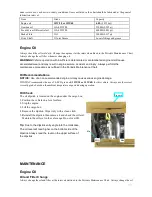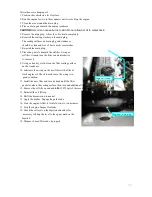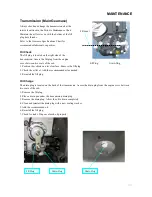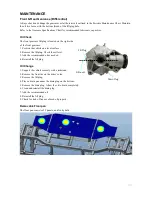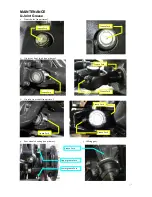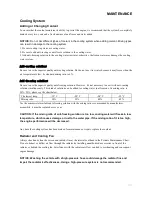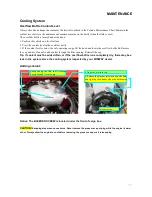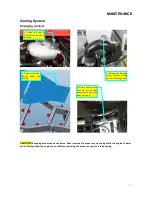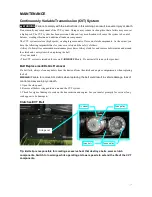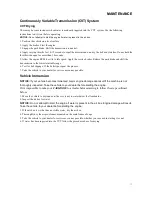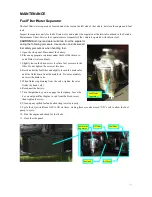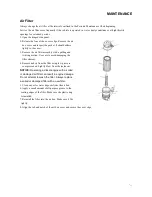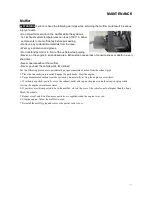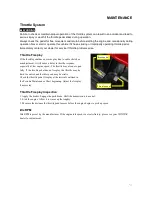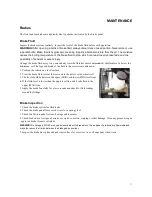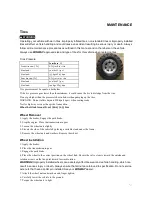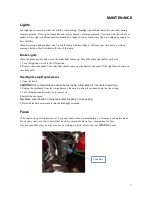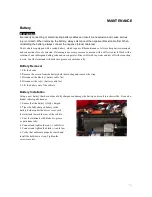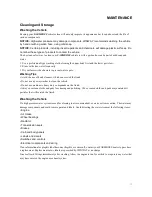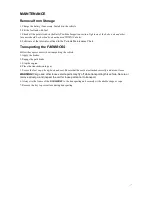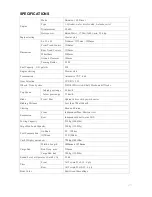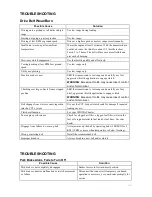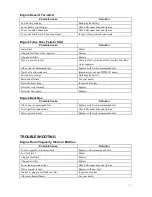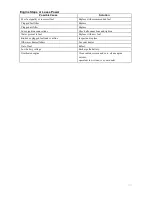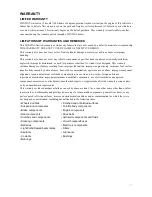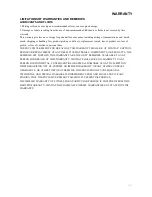
MAINTENANCE
Brakes
The front and rear brakes are hydraulic disc type brakes activated by the brake pedal.
Brake Fluid
Inspect the brake system routinely. Inspect the level of the brake fluid before each operation.
WARNING!
After opening a bottle of brake fluid, always discard any unused portion. Never store or use
a partial bottle. Brake fluid is hygroscopic, meaning it rapidly absorbs moisture from the air. The moisture
causes the boiling temperature of the brake fluid to drop, which can lead to early brake fade and the
possibility of accident or severe injury.
Change the brake fluid every two years and any time the fluid becomes contaminated, the fluid level is below the
minimum, or if the type and brand of the fluid in the reservoir are unknown.
1. Position the vehicle on a level surface.
2. View the brake fluid level at the reservoir in the driver’s side wheel well.
3. The level should be between the upper (MAX) and lower (MIN) level lines.
4. If the fluid level is lower than the upper level line, add brake fluid to the
upper (MAX) line.
5. Apply the brake forcefully for a few seconds and check for fluid leakage
around the fittings.
Brake Inspection
1. Check the brake system for fluid leaks.
2. Check the brake pedal for excessive travel or a spongy feel.
3. Check the friction pads for wear, damage and looseness.
4. Check brake discs for signs of cracks, excessive corrosion, warping or other damage. Clean any grease using an
approved brake cleaner or alcohol.
WARNING!
Do not apply WD-40 or any petroleum product to brake discs. These types of products are flammable and
may also reduce the friction between the brake pad and caliper.
5. Inspect the brake disc spline and pad wear surface for excessive wear. Change pads when worn.

